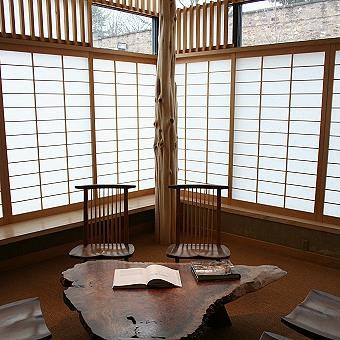Studies indicate that there are actually more pollutants indoors than outside, even in a large, crowded city like Los Angeles. Poor indoor air quality leads to Sick Building Syndrome, the symptoms of which include: allergies, asthma, fatigue, headache, nervous-system disorders, respiratory congestion, sinus congestion, and irritation of the eyes, nose, and throat. Amazing to think that just a few little plants can clear up all those problems!
NASA did a study for over two years researching how to purify the air both in space habitats and on earth and found that good ol' houseplants do the best job! Here are 5 fantastic plants that purify the air (I have all of them in my home!):
 Areca Palm: This palm tree is on the larger side (the one I have in my house is about 6 feet tall) but it is a slow grower. Fantastic for the office or living room area. According to the NASA study by B.C. Wolverton, it is the one of the top-rated toxin absorber and air purifying plants out there. It is particularly effective in removing xylene (used as a solvent on leather, among other products), toulene (found in paint), and toxic gas formaldehyde (found in a multitude of products, like textiles -- formaldehyde forms formic acid in the body, which is the same stuff that many venomous insects/reptiles emit when they sting or bite). So, my fellow plant-lovers (or soon-to-be ;), if you take care of an Areca, it will take care of you!
Areca Palm: This palm tree is on the larger side (the one I have in my house is about 6 feet tall) but it is a slow grower. Fantastic for the office or living room area. According to the NASA study by B.C. Wolverton, it is the one of the top-rated toxin absorber and air purifying plants out there. It is particularly effective in removing xylene (used as a solvent on leather, among other products), toulene (found in paint), and toxic gas formaldehyde (found in a multitude of products, like textiles -- formaldehyde forms formic acid in the body, which is the same stuff that many venomous insects/reptiles emit when they sting or bite). So, my fellow plant-lovers (or soon-to-be ;), if you take care of an Areca, it will take care of you!
 The Rubber Plant is great because of its distinct, firm aesthetic appeal. Appreciated by architects and designers for its specific look, the Rubber Plant is excellent at removing formaldehyde and other chemical vapors from the air. It is bred for toughness and can survive in less light than most plants its size. But be careful, this it does not tolerate overwatering. It does enjoy its leaves sponged off with water occasionally, though. Depending on your pot size, rubber plants grow 2-8 feet tall.
The Rubber Plant is great because of its distinct, firm aesthetic appeal. Appreciated by architects and designers for its specific look, the Rubber Plant is excellent at removing formaldehyde and other chemical vapors from the air. It is bred for toughness and can survive in less light than most plants its size. But be careful, this it does not tolerate overwatering. It does enjoy its leaves sponged off with water occasionally, though. Depending on your pot size, rubber plants grow 2-8 feet tall.
 English Ivy is a great plant with lovely leaves that can decorate nearly any area in a room, and stay small or grow full. You can take one branch from it and plant it in a little pot/cup (mine are in clear drinking glasses that I don't want to use anymore) or use a large planter to grow a full, lush plant. They are particularly effective in removing formaldehyde. The cheerful, delicate look of it really brightens a room.
English Ivy is a great plant with lovely leaves that can decorate nearly any area in a room, and stay small or grow full. You can take one branch from it and plant it in a little pot/cup (mine are in clear drinking glasses that I don't want to use anymore) or use a large planter to grow a full, lush plant. They are particularly effective in removing formaldehyde. The cheerful, delicate look of it really brightens a room.
 The Boston Fern has been around since prehistoric times and were first popular in the Victorian age for their lush foliage. It is the best plant of those tested in the NASA study for removing air pollutants, especially formaldehyde, and also creates a valuable amount of humidity in its environment. This plant can hang or sit on a pedestal, as its leaves droop downward as it grows. Keep moist.
The Boston Fern has been around since prehistoric times and were first popular in the Victorian age for their lush foliage. It is the best plant of those tested in the NASA study for removing air pollutants, especially formaldehyde, and also creates a valuable amount of humidity in its environment. This plant can hang or sit on a pedestal, as its leaves droop downward as it grows. Keep moist.
 If you want a flowering plant that looks lovely on the desk (3 in my office) or in the house, the Peace Lily is a winner. These puppies only need to be watered about twice a week and if they get a little droopy from dehydration, they perk right back up after some watering. The Peace Lily excels in removing acetone, alcohols, trichloroethylene, benzene and formaldehyde. A gorgeous little addition to any environment!
If you want a flowering plant that looks lovely on the desk (3 in my office) or in the house, the Peace Lily is a winner. These puppies only need to be watered about twice a week and if they get a little droopy from dehydration, they perk right back up after some watering. The Peace Lily excels in removing acetone, alcohols, trichloroethylene, benzene and formaldehyde. A gorgeous little addition to any environment!
For more info, look at B.C. Wolverton's "How to Grow Fresh Air: 50 Houseplants that Purify Your Home or Office"
*The marvelous plant store I found myself at is Anawalt Lumber. For all of you LA locals, the one on Robertson and Santa Monica blvd is great - ask for Angel, he is so sweet and will take care of your every need!




 He began studying forestry, then architecture and, later, woodworking. After years of intense study and experience, he eventually set up a studio for furniture making in New Hope, Pennsylvania.
He began studying forestry, then architecture and, later, woodworking. After years of intense study and experience, he eventually set up a studio for furniture making in New Hope, Pennsylvania. 
 The goal of Nakashima's work was to encourage people to live in harmony with nature, rather than destroy it for their own use.
The goal of Nakashima's work was to encourage people to live in harmony with nature, rather than destroy it for their own use. 


)





